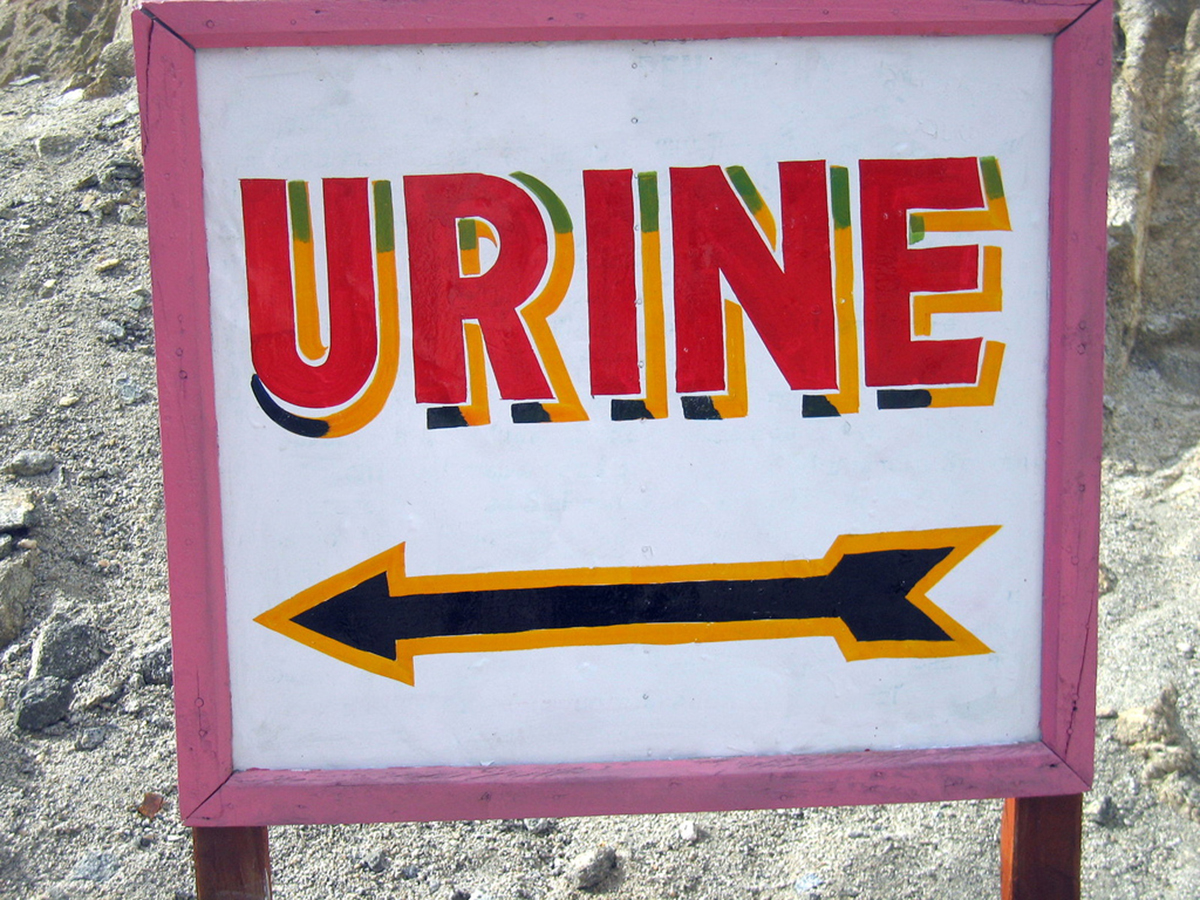Table of Contents
Mucus in the urine, blood in the urine, and an unusual urge to urinate are just some of the signs of diseases or the urinary tract. Other important clues to health status that can be found just by looking at urine include:
Cloudy Urine
Normal urine is clear or straw-yellow in color. Cloudy urine typically indicates the presence of unusual proteins in the urine. (The body makes mucus from complex carbohydrates.) Sometimes cloudy urine is a relatively benign symptom, like mild dehydration. As soon as you drink enough water, and it is not necessary to drink so much that you slosh, the cloudiness leaves your urine.

Chronic kidney disease can cause protein to "leak" into the urine. Typically renal failure of this sort also leaves too much ammonia in the bloodstream. As the disease progresses, dialysis with low-protein, low-salt, low-potassium diet (even fruits and vegetables can cause problems at this point) may be needed to preserve life. How can you know you need to get to the doctor urgently for a test of kidney function? Another common symptom of chronic kidney disease is extremely itchy skin.
Foamy Urine
Men who are sexually abstinent, or whose bodies make unusually large amounts of semen, sometimes have foamy urine without any other urinary tract problem. In both men and women, foamy urine can be caused by the same conditions that result in cloudy urine.
Scanty Urine, Also Known As Oliguria
Having to go "just a little" can be a sign of dehydration. The solution is usually very simple. Rehydration, preferably with water and electrolytes, not just plain water (even water with a little salt and sugar, about a teaspoon, or five grams, in a quart/liter of water), is best.
- Pre-eclampsia. This potential fatal complication of pregnancy is also accompanied by extremely high blood pressure. It is a medical emergency for both the mother and the unborn child.
- Hypovolemic shock. This is a condition of not having a sufficient volume of blood plasma. It can result from injuries that cause bleeding, severe burns (which cause "oozing" of blood plasma), and overdoses of medications that cause vasodilation, such as nitrates and nitroglycerin pills.
- Diabetic ketoacidosis (also known as DKA) is a condition that most commonly occurs in type 1 diabetics who are deprived of insulin. Unable to use glucose because of not getting enough insulin, the body burns fats, producing ketones, which can build up to toxic levels. DKA is a medical emergency.
- Hyperosmolar hyperglycemic nonketotic syndrome. Sometimes type 2 diabetics develop severely high blood sugar levels before they even know they have the disease. There is so much sugar in the blood plasma that it becomes "sticky," and circulation to the kidneys may nearly stop. Bringing blood sugar levels down with insulin, along with rehydration, is the usual treatment. This condition also requires emergency treatment.
- Multiple organ dysfunction syndrome. When the kidneys and other organs shut down, urine production is greatly reduced.
- Urinary tract infections and urinary tract infections can also cause oliguria.
READ Ten Home Remedies for Kidney Stones: Renal Calculi Treatmen
Any condition that causes scanty urination can result in anuria, complete shutdown in urine production.
- Boon et al, Davidson's Principles & Practice of Medicine (20th Ed), p., 475.
- Klahr S, Miller S (1998). "Acute oliguria". N Engl J Med 338 (10): 671–5. doi:10.1056/NEJM199803053381007. PMID 9486997.
- Photo courtesy of Kevin Lau via Flickr: www.flickr.com/photos/kevinlau/2192721876
- Photo courtesy of Ajay Tallam via Flickr: www.flickr.com/photos/90417577@N00/2143266335


Your thoughts on this